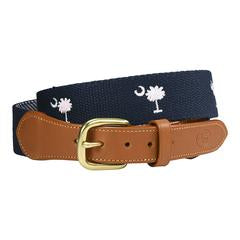
How Do You Define Quality in Apparel? - Part 2 of the Quality Series
Share
This is part 2 in our series about how to distinguish high quality apparel, so you get the best product for your hard-earned cash.
What do we mean by "quality"?
Research suggests there are five major approaches to the definition of quality: aesthetics-based, product-based, user-based, value-based, and manufacturing-based. We believe all approaches are important, and different roles in our firm are focused on different aspects and approaches. However, at the end of the day the judge of the product is the consumer, and most customers that we have talked with are most interested in value-based approaches -- they want the best quality of the aesthetics, product, usability, and manufacturing at a price they feel is fair (best value).
Over the years of working with different product development processes and customer preferences, we have determined several important factors that drive the best quality in a value-based approach.
1. Natural Fabrics
When it comes to fabrics the number one thing is whether or not a garment is made out of 100% natural materials. If the item is made out of synthetic materials like polyester, rayon, nylon, etc. it won't feel and wear the same as a natural material. Natural fabrics feel better against the skin, wash better, and last longer. Of course, there are exceptions for things like hosiery and exercise clothes, when synthetic materials are used for functional reasons. Still, the exceptions about when natural fabrics aren't the best choice are few and far between. Look for fabrics like 100% wool, cotton, silk, etc. and even then, check for the thickness, softness, how dense and tight the weave is, and how the garment drapes. These characteristics vary widely and are critical to ensure you get a garment that will keep its shape and color and feel over repeated washings, cleanings and normal wear.
We talked a lot about leather (a material and not a fabric) in the prior post. So, that information will not be repeated here, please refer to that post for details.
We want you to know that Charleston Belt & Suspenders always uses all natural fabrics and materials.
2. Construction, Finishing, Craftsmanship
The quality of construction can be seen in places where materials are joined together, how well that process is performed. And, if stitched, how tight and even the stitching is. Most of what can be seen in the construction process is the type of finishing technique.
A. Seams
A common method for finishing seams uses a special machine called a serger that greatly reduces the manual effort involved. But, can result in seams that look sloppy and are not durable over time. In the image below the tail from the serged seam wasn't properly trimmed. Sometimes using serged seams is a good solution for a product. But, it does not produce the desired look/aesthetics for our products, and would add unwanted bulk.
(Note: Charleston Belt does not serge seams. Our seams are sewn with tight and smooth stitches.)

B. Topstitching
If the thread is visible on the outside (called topstitching), that will give you a clue to the level of quality, as well. Look for thick thread that is smooth without a ton of fibers starting to fray.
(Note: Charleston Belt products use contrasting colors of top stitching that are sewn with high quality thread using even and smooth stitches.)

C. Glue vs. Stitching (shoes and accessories)
If you're looking at shoes, stitching is a must. If the product is only glued (you can't see the stitching of the sole from the outside), the product will start to come apart after use. I was playing golf last week with a person whose actual sole came off their golf shoe during our round. Crazy!
Charleston Belt uses a heated glue process for their needlepoint belts to adhere the stitching mesh to the leather. For larger sizes (44+), the belt is also top-stitched to provide added durability. For smaller sizes, we do not perform additional top stitching because the heated glue process provides an excellent adhesive and a very smooth finish to the product. This process requires skilled labor to ensure the folding of the top and bottom rows of stitching is performed accurately and so that the finished product does not expose any of the mesh and lays flat and tight.
In the image below, notice the perfect application of the mesh, leather, and adhesive process, eliminating the need for top stitching, resulting in an excellent finish to the product that is flat and tight.

Should you pay a premium for a high quality product?
Using high quality fabrics and materials will typically raise the cost of goods over cheaper materials. However firms that focus on quality may save costs in other value-added areas, and usually have stronger overall financial performance. The quality of materials and processes should be factored into the price, but not in a way that is out of alignment with the value.
The market trend is toward consumers demanding high quality at low prices, as well as emphasis on values of durability, reliability, craftsmanship, and longevity in products, all of which figure into the market price.
So, keep an eye out for the quality dimensions mentioned above and evaluate their worth to you as a consumer. As always, Shop Smart!